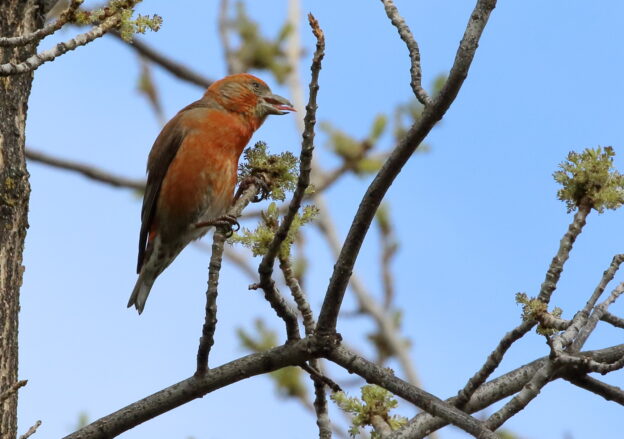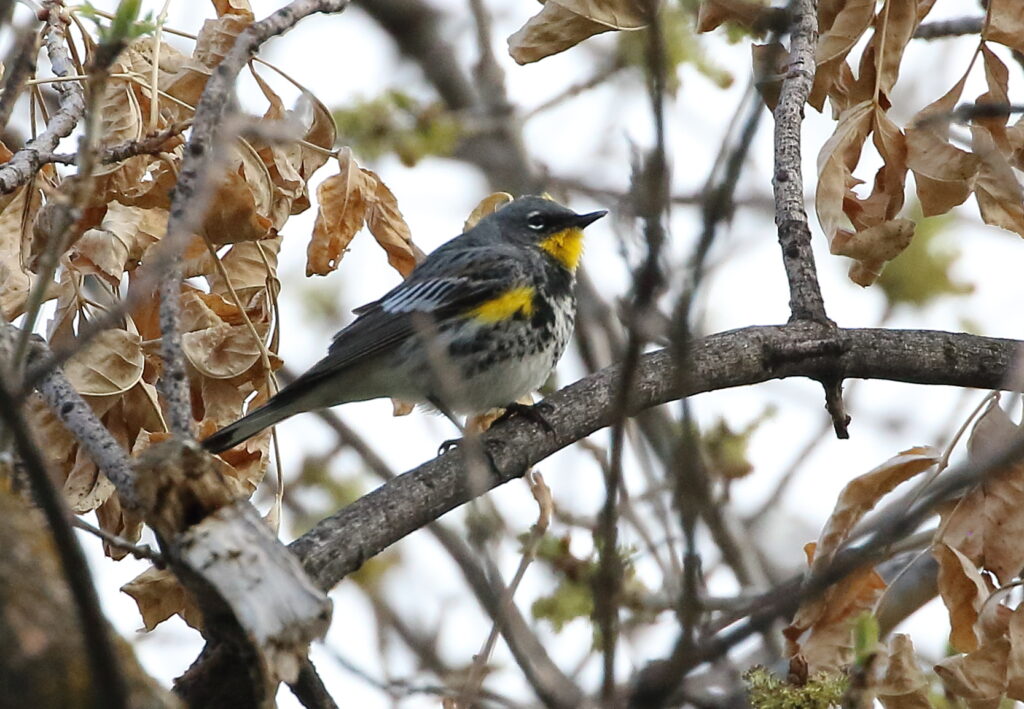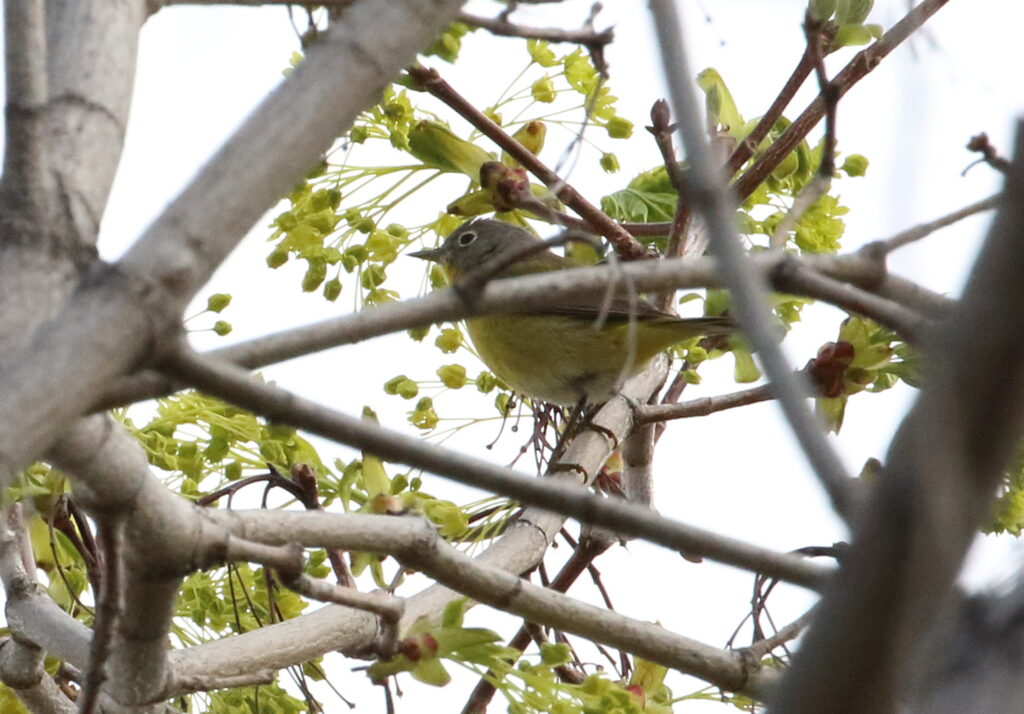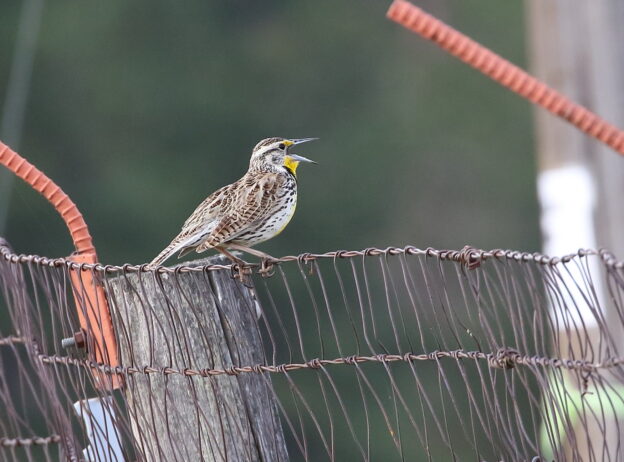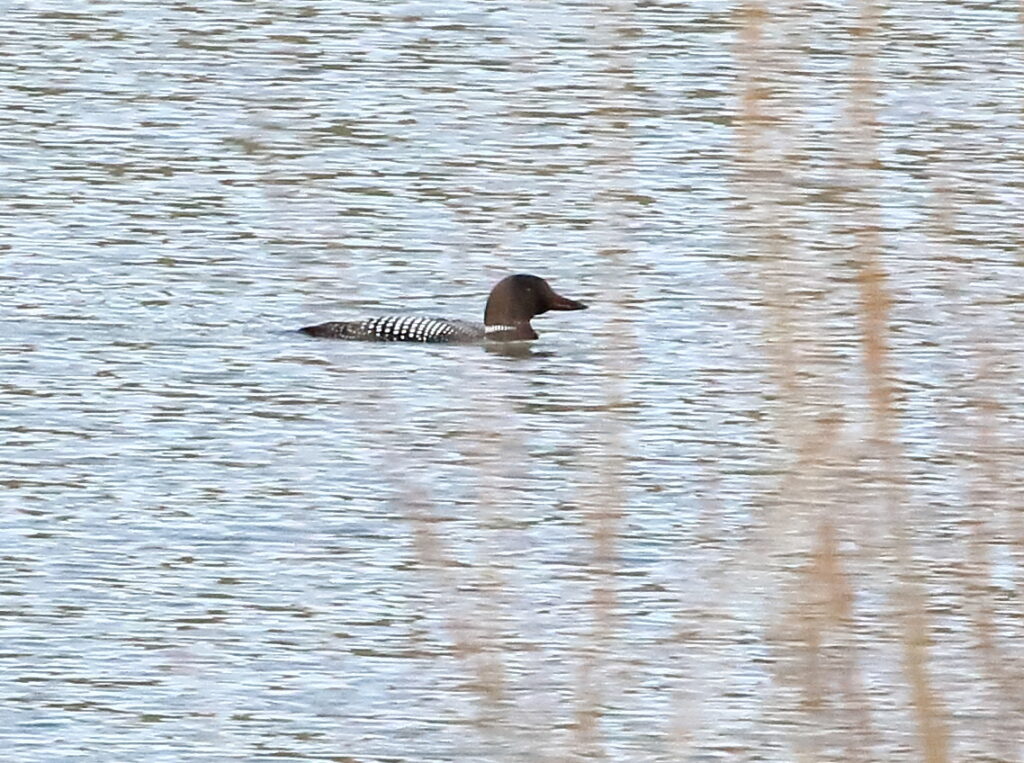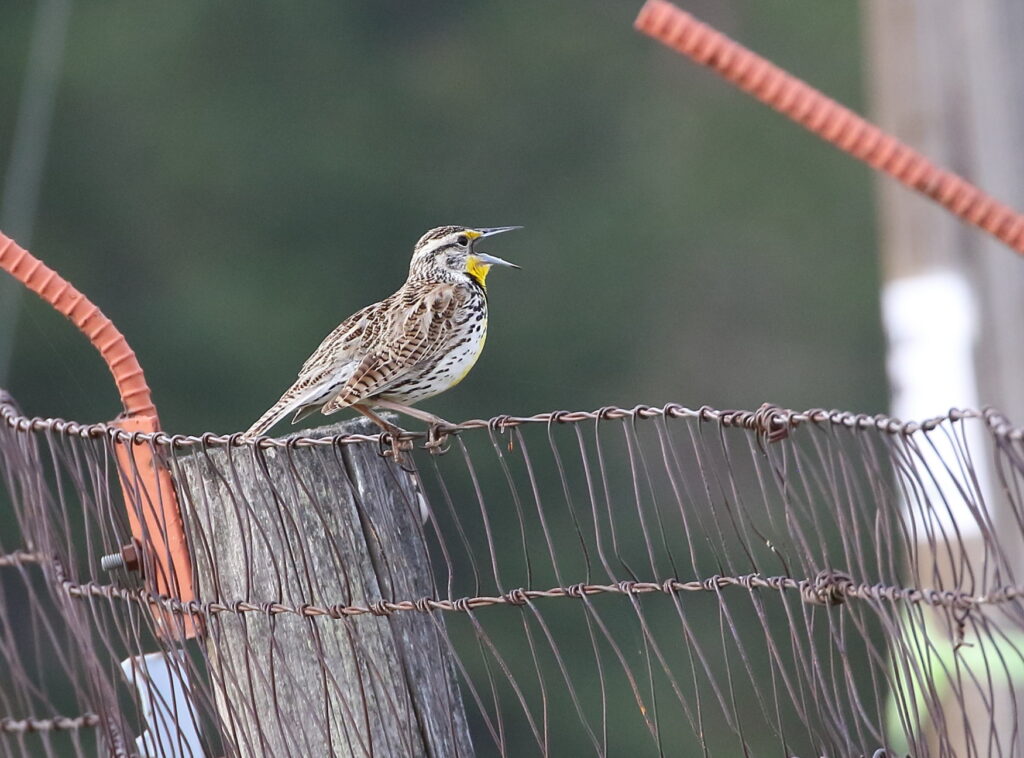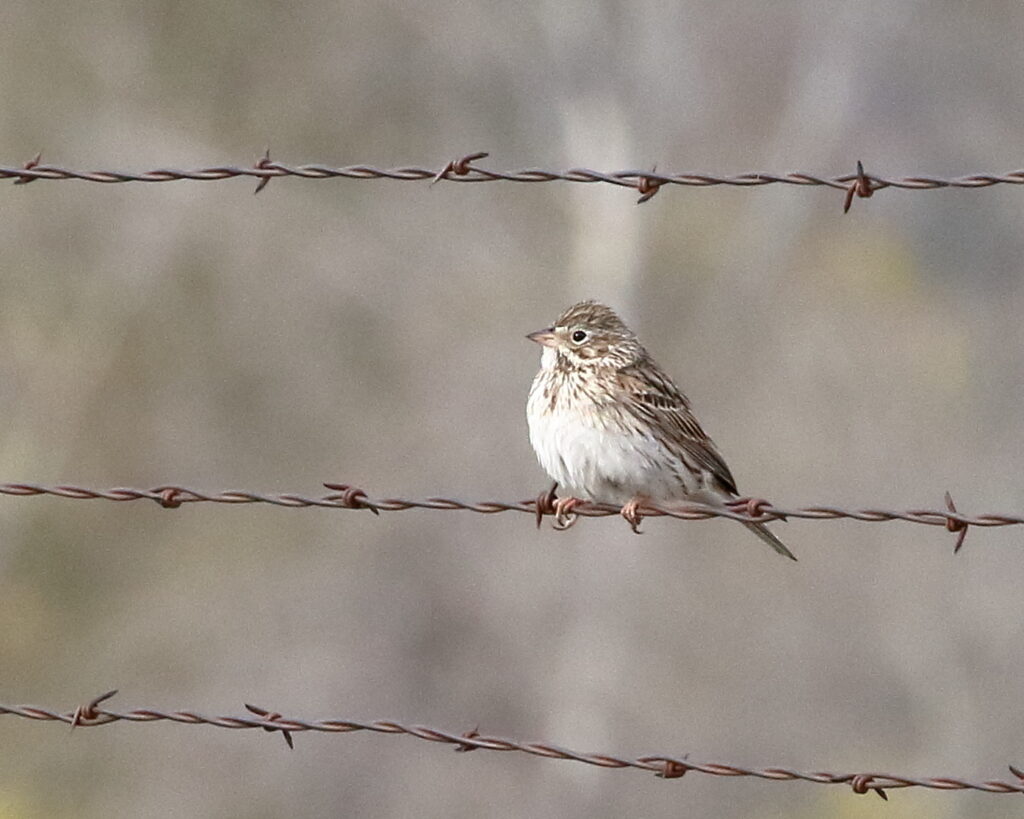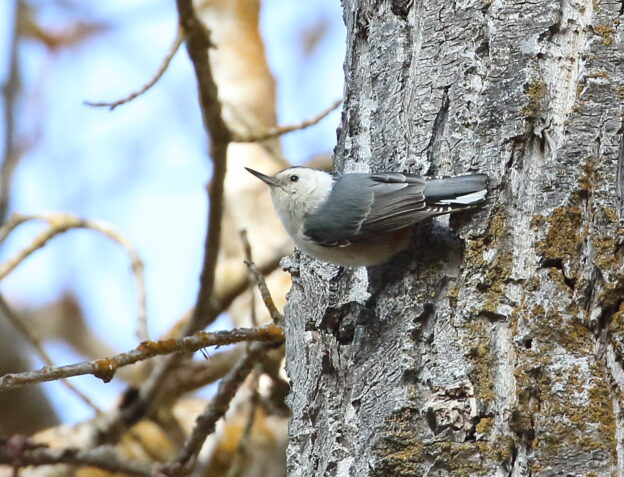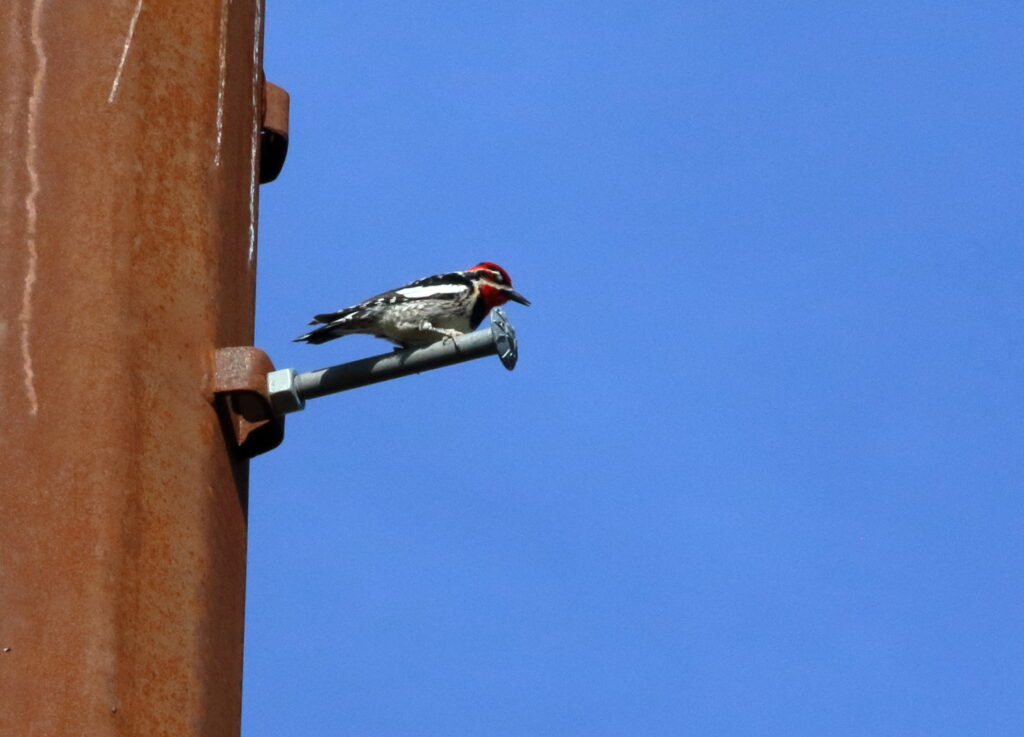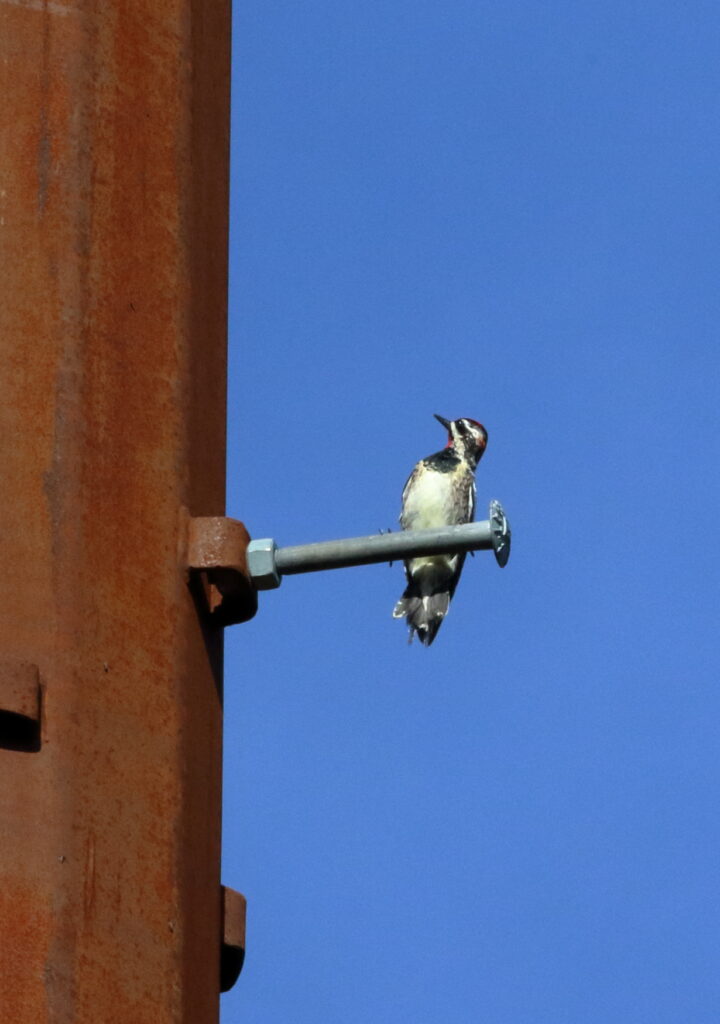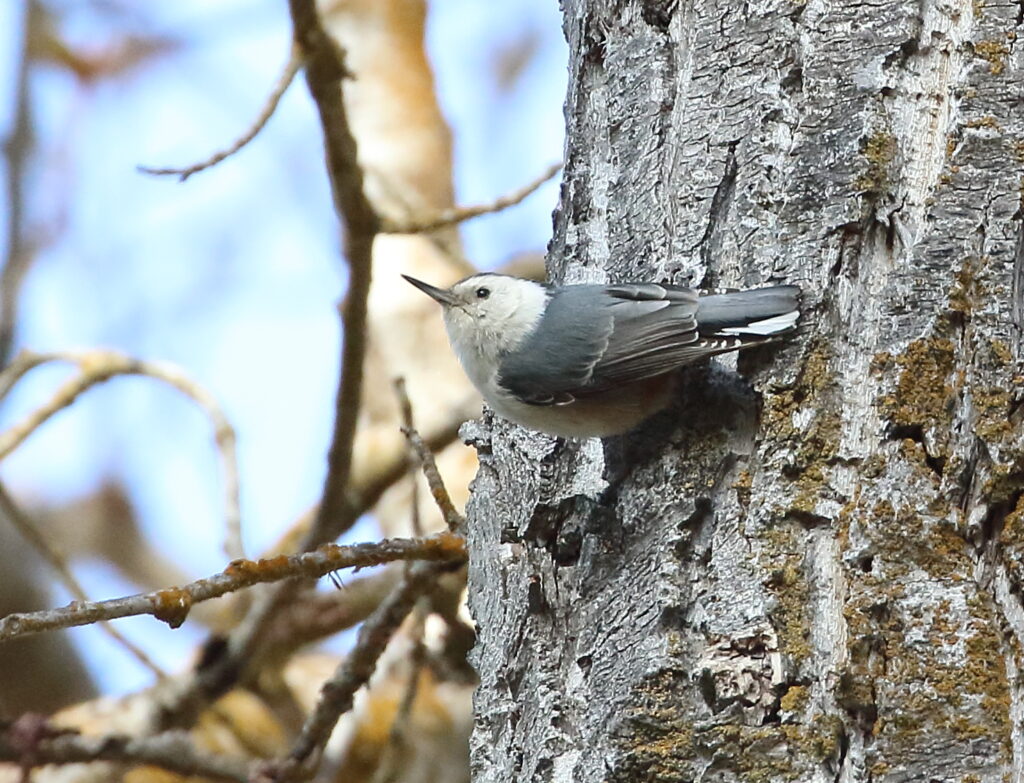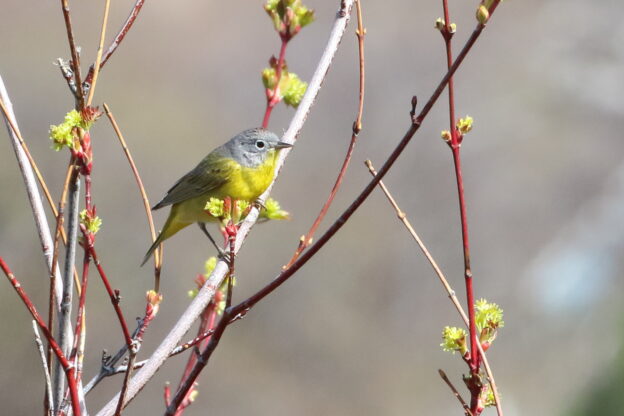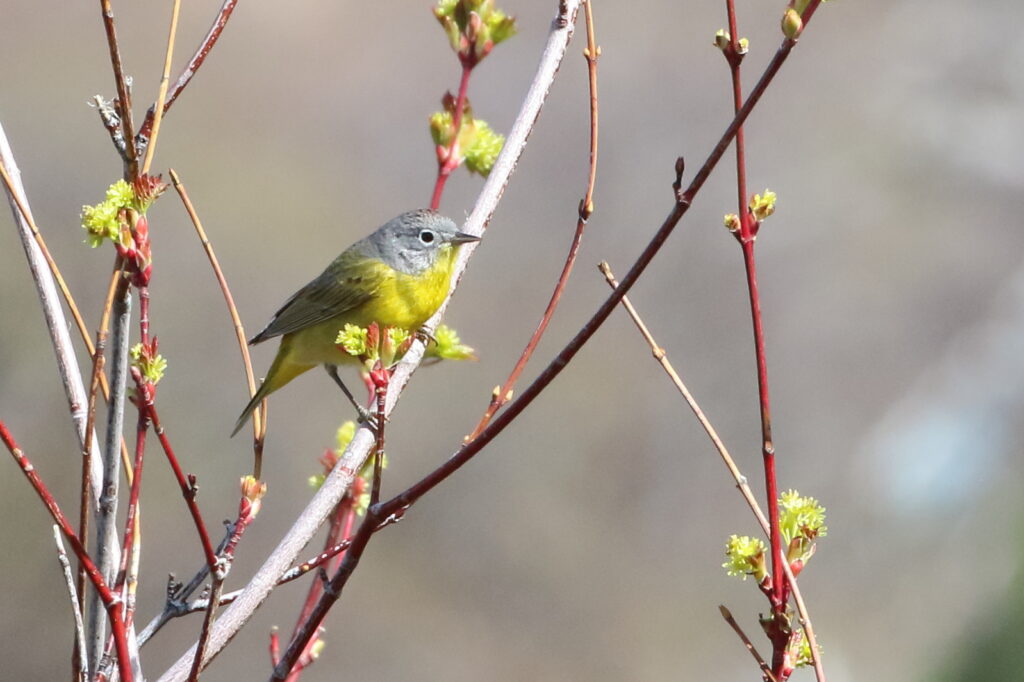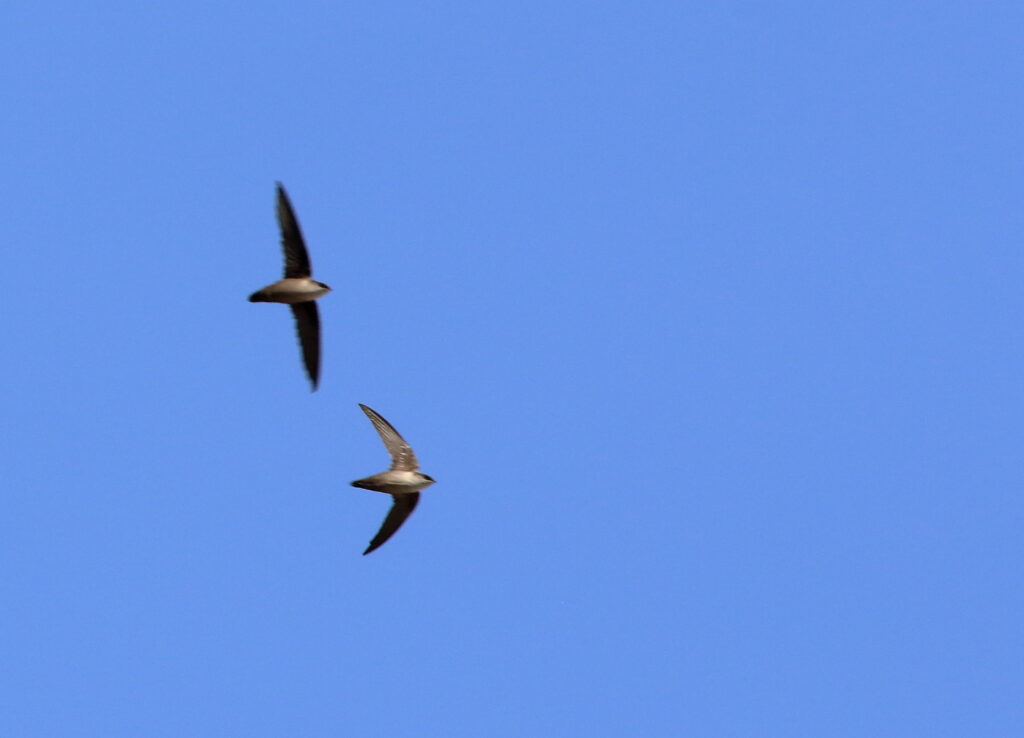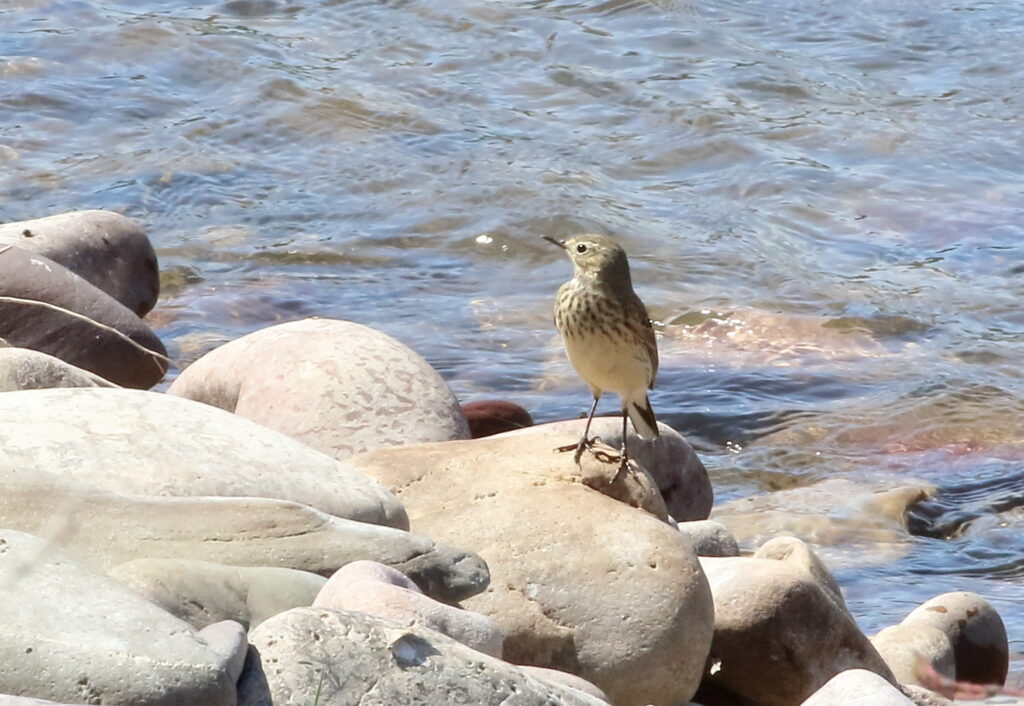Thank you for following our Birding Therapy Week posts. Please share and don’t forget to subscribe to receive future posts!
To wrap up Birding Therapy Week, I leaped onto my bike Sunday morning and pedaled to a spot I’d been sorely neglecting this year: the Missoula Cemetery. One thing that got me through the first year of the pandemic was cycling out there on a regular basis just to see what was flitting around. I’d ended 2020 with a total of 50 species, firmly cementing my position of Cemetery King, and seeing many surprising birds as a result. Braden and I had ventured out there once this winter and been rewarded with a flock of Common Redpolls, but I needed to get out there again before the trees fully leafed out, making it difficult to spot passerines.
As usual, I parked near the entrance to put in my hearing aids, grab a drink of water, and stretch out before beginning my tour. As I tried to loosen my hamstrings, however, I was already hearing some interesting sounds. “Hm . . . maybe Pine Siskins?” That’s when I looked up to see a flock of 20+ Red Crossbills! Not only was this a new sight for the cemetery, just that morning we’d seen our first ever crossbills at our backyard feeder. In fact, this was shaping up to be our best crossbill year yet, and I spent a solid 15 minutes enjoying the cemetery flock, which also contained liberal doses of Pine Siskins and a Yellow-rumped Warbler.
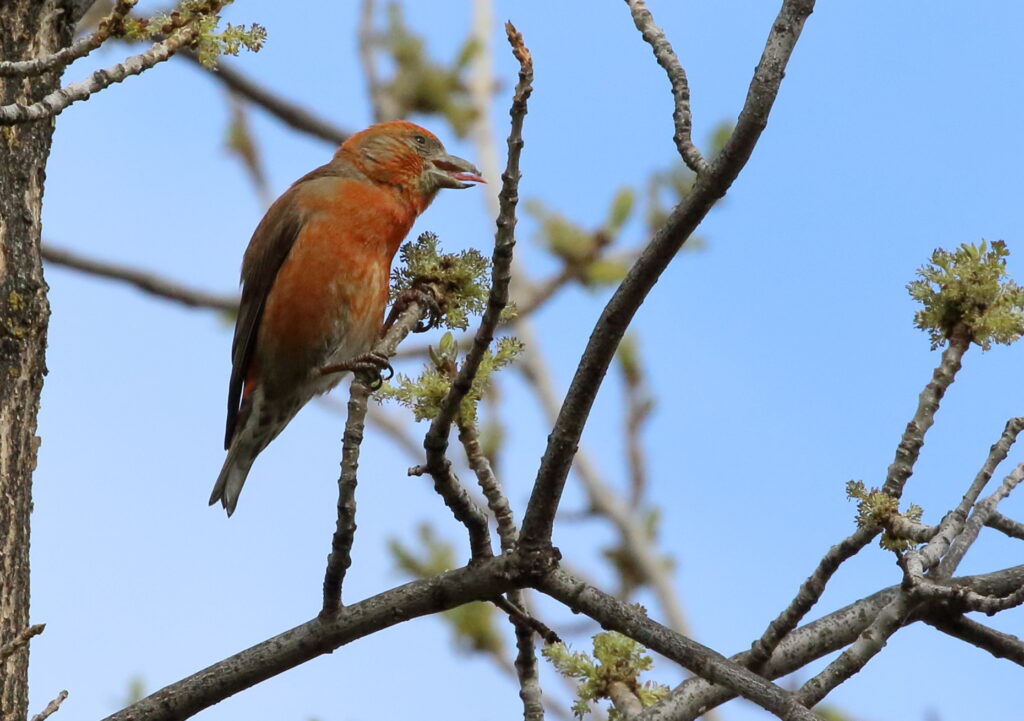
Setting off through the tombstones on my bicycle, I wasn’t sure what else I’d find, but encountered other common cemetery birds such as robins, ravens, and flickers, but it was a weird morning, a bit cool and breezy and I began to lose hope that I’d see the unusual passerines I really craved. Turning on to the last access road, however, I stopped to investigate a couple of little birds that turned out to be House Finches. But among them, I spotted a flash of yellow—a Nashville Warbler!
Alas, I failed to find any sparrows in the spot I’d seen both Song and White-throated Sparrows before, but I did get my Year Brewer’s Blackbird and a new “location bird”—Turkey Vulture—while racking up a total of 17 species. All of which left me satisfied—but not really.
One thing Braden and I have noticed during the past seven years of birding is how much better many of our public open spaces could be for birds, insects, and other wildlife. The Missoula Cemetery is a great example. I mean, it potentially has everything: lots of land, trees, even a fountain, and the dedicated staff obviously works hard to keep it looking nice. Unfortunately, the place is groomed to death—literally. Dead limbs and trees that could provide insect food for birds are meticulously removed. Messy brush—the stuff many songbirds love—is absolutely not tolerated. I could smell some kind of chemical—weed killer, I’m guessing—emanating from the lawns. Even the fountain where birds could drink is blue from some kind of bleach or detergent in it.
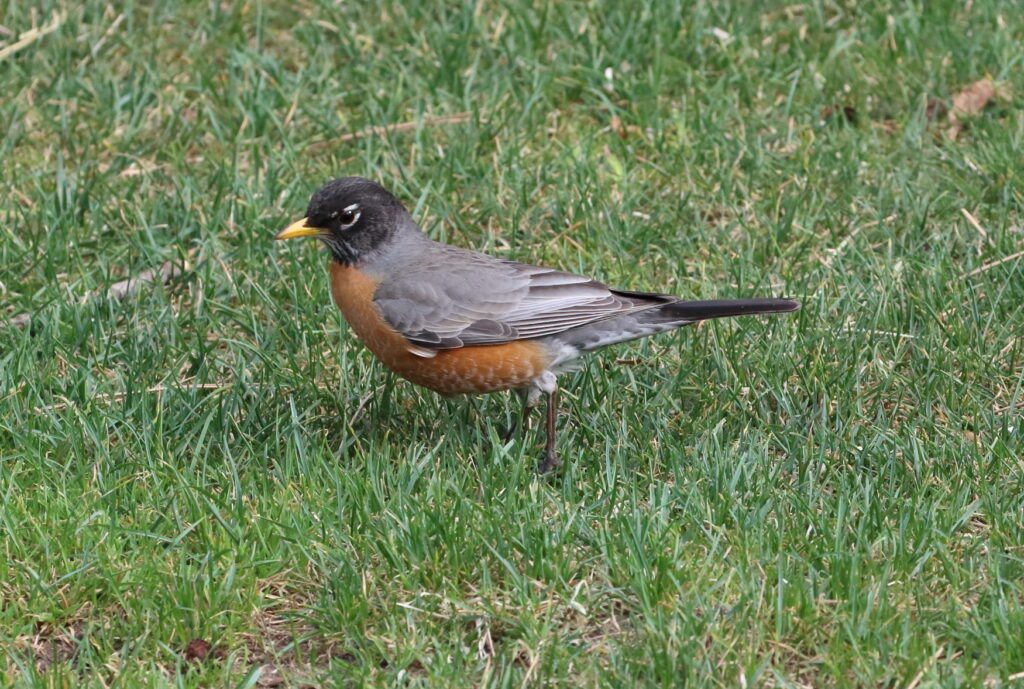
Sadly, this is a situation that repeats itself over and over across America. Our vision of what is nice, neat, and orderly actually represents an extremely unhealthy environment, one that is undoubtedly harmful to wildlife and perhaps humans as well. No one really is to blame. It’s in our nature to want to make things neat and orderly. However as our knowledge has improved, this is something we as citizens can change. As I wrapped up Birding Therapy Week, I promised myself that I would redouble my efforts both to educate others and perhaps change some of our outdated thinking about both our personal and public open spaces.

